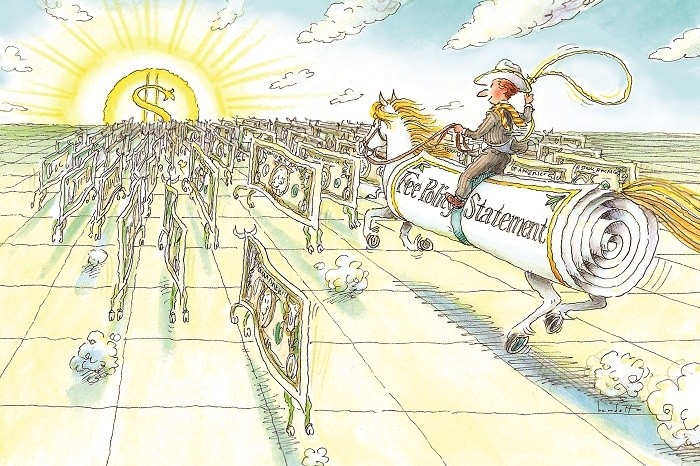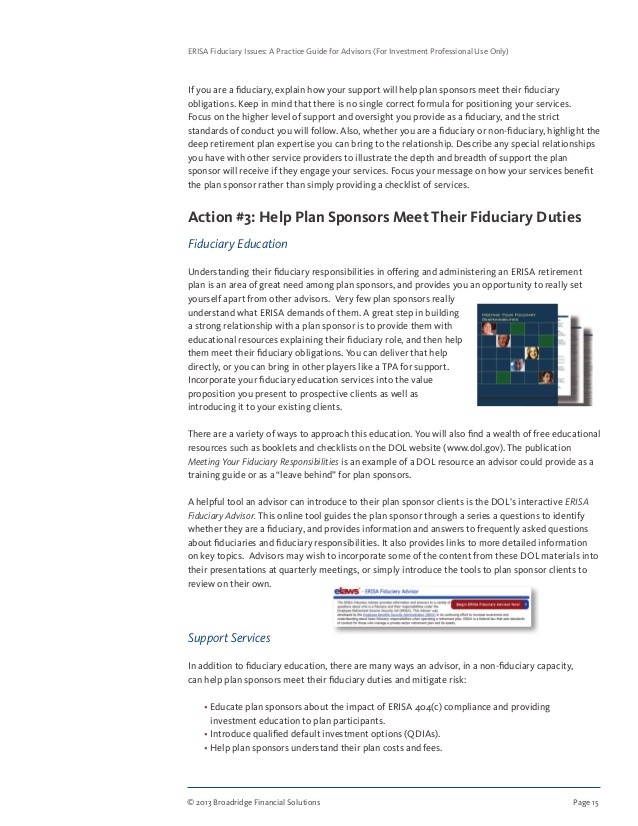Is Fee Levelization Right for Your 401(k) Plan
Post on: 16 Апрель, 2015 No Comment

In the past, the average retirement plan participant may have thought that their 401(k) plans were free, but now that the fee disclosure regulations have taken effect, participants are made aware of the exact costs of investment management and administrative services on their quarterly statement. Revealing these formerly hidden costs likely raises several new questions for plan sponsors.
Frequently, an additional administrative expense to cover plan costs is added to the participant’s total fees from the investment. These fees are often charged in the form of revenue sharing built into the expense ratio of many retirement plan mutual funds. As plan sponsors receive more details about the source of particular fees—especially administrative ones—they have begun to ask questions about attaining more equitable distribution of fees among their participants’ accounts.
Revenue Sharing
Revenue sharing is a method of plan expense collection in which a mutual fund company charges a fee, and then refunds a portion to the plan’s recordkeeper to cover administrative expenses. These expenses are incurred by the recordkeeper for providing administrative services such as maintaining participant account records, providing quarterly statements, fielding participant inquiries through a call center and maintaining a website for participant and plan sponsor usage.
Building service fees into investment options and paying them through revenue-sharing amounts covered the fees “behind the scenes.” This method has worked well. Plan administration is expensive, and sponsors appreciate a mechanism that allows users to pay for services of which they are the primary beneficiaries and users. Given participants’ reactions to even nominal fees listed on their quarterly statements, incorporating administrative fees into the investment expense made internal administration and communication much simpler.
However, the revenue-sharing system has drawbacks. Not all mutual funds charge/pay the same level of revenue sharing. Some of the funds have no revenue sharing, whereas others may have as much as 0.50 percent or more. Participants who invest in a mutual fund which charges a higher revenue-sharing fee ultimately pay more of the administrative costs for the plan, and unknowingly support their co-workers’ plan costs.
Levelized Fees

Because of this imbalance, plan sponsors have been seeking a way to allow for more equitable sharing of plan expenses. Recordkeepers can administer programs whereby each investment option has the same revenue-sharing percentage amount, which allows all participants to bear a proportionate share of the administrative costs, regardless of funds used or revenue provided.
The first step of implementing such a program is for the recordkeeper to confirm the program’s “required revenue,” or administrative costs. This amount is typically quoted in terms of a percentage of assets, and is then compared to the percentage of revenue sharing available in each investment. If the fund’s revenue-sharing amount exceeds the required revenue, the recordkeeper provides a credit on the assets in the amount of the excess revenue received. All participants using the fund share that credit. If the fund’s revenue sharing falls below that required revenue amount, an additional fee is charged in the amount of the shortfall on all assets in the fund. Both this potential fee and credit appear on the participant’s quarterly statement.
Below is an example of fee levelizing using three investment options in a retirement plan. In this example, the plan’s required revenue amount is 0.40 percent.














